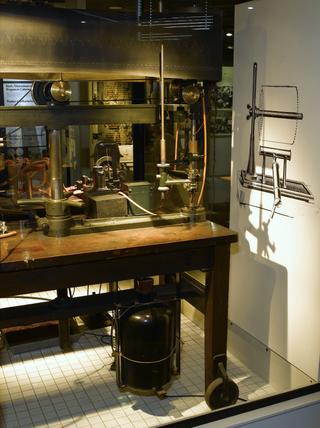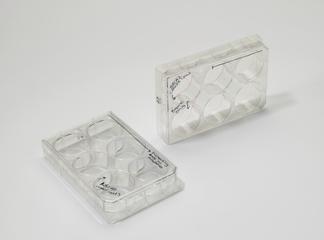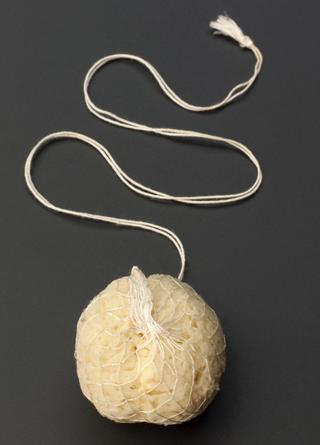
Two Sets of Six Well Cell Culture Plates
- Made:
- 2019 in United Kingdom






Two demonstration six well cell culture plates showing the impact of Olaparib on healthy cells that do not have a BRCA gene mutation. Made by Professor Christopher Lord, Dr Rachel Bough, Dr Stephen Pettitt, at the Institute of Cancer Research, London, United Kingdom, 2019.
Scientists and clinicians at The Institute of Cancer Research and The Royal Marsden worked together for over ten years to develop this world first medicine. Olaparib was the first of a new class of cancer drugs called PARP inhibitors. PARPs are proteins that help damaged cells repair themselves. Researchers found that cancer cells with BRCA mutations rely on PARPs. Blocking PARP activity with Olaparib caused these cancer cells to die, as they were unable to repair themselves. This technique, which targets the inherent weakness of the cancer cell, is called synthetic lethality. The drug effectively targets and kills the cancer cells, but not healthy ones which means there are fewer side-effects.
Each blue dot is a group of healthy cells. Olaparib has very little effect on these cells, showing that the drug has fewer side-effects than more traditional chemotherapies.
Details
- Category:
- Laboratory Medicine
- Object Number:
- 2020-146
- Materials:
- plastic (unidentified)
- Measurements:
-
overall: 85 mm x 128 mm
- type:
- cell culture plates
- credit:
- Professor Christopher Lord, Dr Rachel Bough, Dr Stephen Pettitt, The Institute of Cancer Research, London




